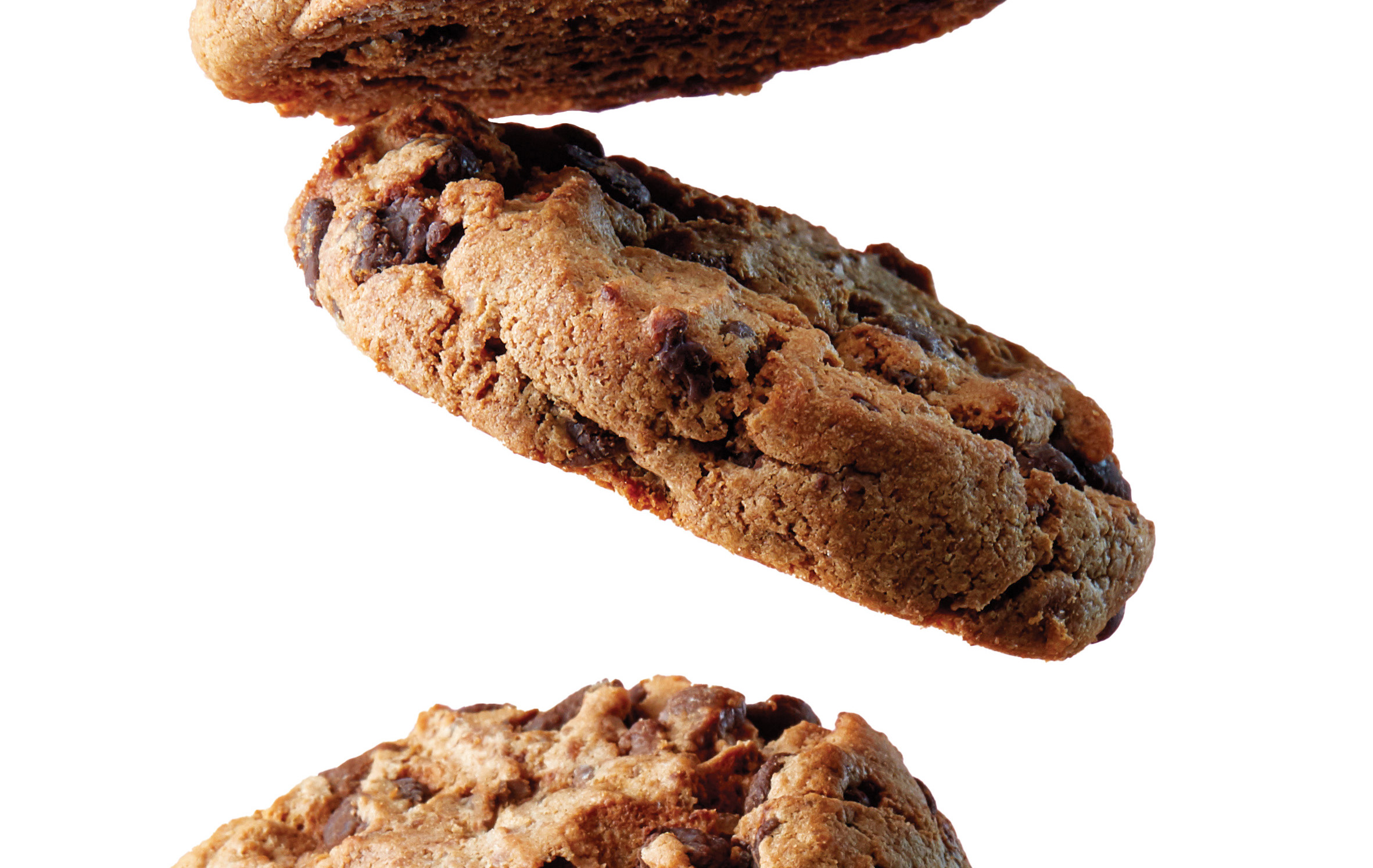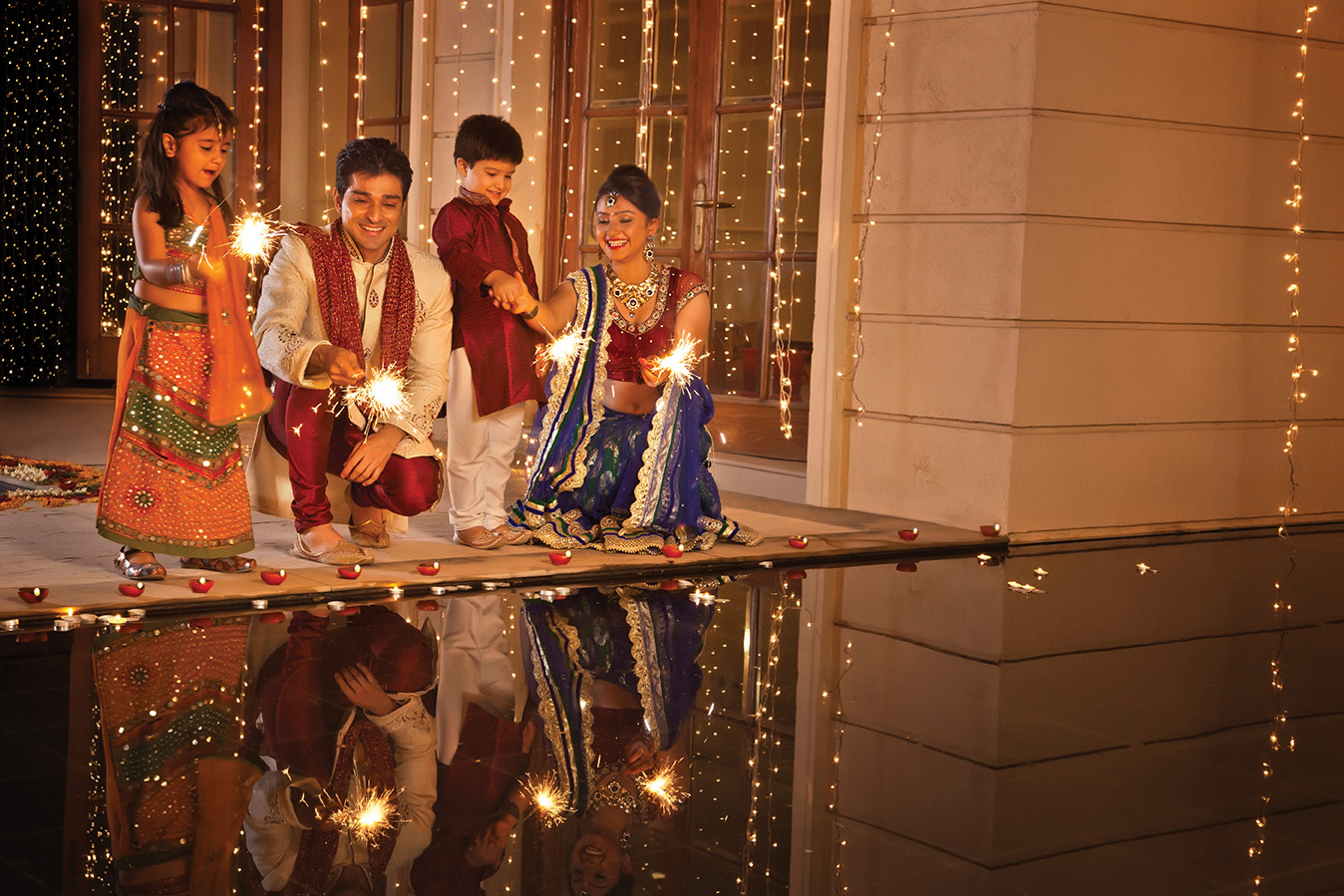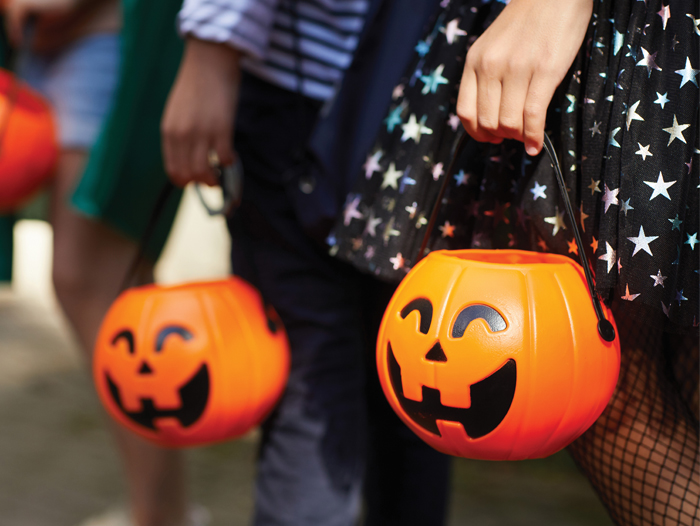By James Forr, Head of Insights, Olson Zaltman, Columbia, Missouri, jforr@olsonzaltman.com and Kacie Burton, Senior Insight Associate, Olson Zaltman, Pittsburgh, Pennsylvania, kburton@olsonzaltman.com
Picture this—every year on the same evening, a town’s children don disguises. They range from scary to silly, from poorly crafted to elaborate. As night falls, the children travel from house to house in their neighborhoods, knocking on doors and uttering the same phrase, “trick or treat!” The neighbors, expecting this, hand out candy to each child who comes by.
This, of course, is what happens on Halloween in the U.S. But imagine how this would sound to someone unfamiliar with the holiday. Upon hearing such an objective description of this behavior, one might ask, “Why on earth do they do that?” This is the overarching question addressed by author and anthropologist Dimitris Xygalatas in his recent book, Ritual: How Seemingly Senseless Acts Make Life Worth Living, where he explores what rituals are and why people perform them. They perform them a lot—even in their role as consumers.
So, what exactly is ritual? Xygalatas explains that, at their core, rituals are extremely intentional and choreographed behaviors that are performed for a particular purpose and yet have no causal link to outcomes. Think about New Year’s traditions, graduation ceremonies, and quinceañeras. Does eating pork on New Year’s Day actually bring good luck? If an impending graduate doesn’t move her tassel from the right side of her cap to the left, does that mean her degree isn’t valid? Does a girl exchanging her flat shoe for a heeled one literally make her a woman? Not really, but all these occasions are bursting with symbolic meaning. Like all rituals, they include specific, intentional, and precisely performed behaviors; there are often “rules” for how these affairs are carried out. Yet, in the grand scheme of survival, they are completely unnecessary.
Despite the disconnect between the behaviors and their outcomes, rituals are hardly irrational. Human performance of ritual can be traced back to before anatomically modern humans existed. There must be a reason why they are so important, practically in human DNA. What do these various ceremonies, events, and performances do for people, and what do they say about them? In the realm of consumer behavior, what do rituals say about consumers’ relationships with various brands?
The “Invisible” Influence of Rituals
Although rituals are an essential part of human existence, they are so ubiquitous, so “big,” that it can be hard for people to pinpoint exactly why they are so important. Sometimes people aren’t even fully aware they are performing a ritual.
In his book, Xygalatas outlines four major roles of rituals. Rituals pacify people’s minds and are a significant part of navigating their social lives. They are a source of emotional support, helping them to feel like they’re in control in an otherwise chaotic universe. Rituals help people feel like a part of a group, reaffirming their identities and their values. Overall, the psychological benefits of rituals can even lead to better health outcomes. It is important for qualitative researchers to sharpen their observational skills and to pay attention not only to what people are saying but also to what they are doing—and further, not even just what people are doing but also how they are doing it. Rituals invite researchers to dig deeper into symbolic behavior to discover more about what it means to be human.
Role 1: Rituals Give Us Control
Most basketball players perform a little ritual before they shoot a free throw. Giannis Antetokounmpo, the star of the NBA’s Milwaukee Bucks, indulges in an especially elaborate one.
After stepping to the free-throw line, he takes the ball from the official, holds it at his waist, takes a deep breath, brings the ball to his chest while spinning it once, dribbles seven times, brings the ball back up to his chest, bends his knees, breathes deeply again, and then shoots.
Strictly speaking, players have 10 seconds to shoot before being whistled for a violation, but during the 2021 season, Antetokounmpo routinely took 12 or 13 seconds. It was fine because officials usually don’t watch the clock too closely. However, during the playoffs, out of nowhere, they began enforcing the rule on him. Opposing fans caught on and trolled him by boisterously counting off the seconds each time he went to the foul line. Naturally, Antetokounmpo responded—perhaps unconsciously—by speeding things up.
Antetokounmpo hit 69 percent of his free throws during the regular season, which is slightly below average. But, in the playoffs, with his timing out of whack, he plummeted to a downright abysmal 59 percent. This is consistent with research in the Journal of Sports Sciences that revealed an average NBA player’s success rate drops from 84 percent to 71 percent when he disrupts his free-throw routine.
Shooting free throws is stressful. All action is stopped, and all eyes are on the person at the line. It is probably extra nerve-racking for a player like Antetokounmpo, who isn’t very good at it. His preshot ritual helps. It reduces anxiety by providing a feeling of control.
Xygalatas argues that a primary benefit of ritual is to make people feel they are in control of unpredictable situations. Athletes preparing for games and soldiers readying for battle are known for their ritualistic (some might say superstitious) behaviors.
But one need not be an athlete or warrior to derive control from ritual. We never know what the new year may bring, so we gather with friends to pop the champagne and offer a toast to the future. No marriage is guaranteed to be a happy one—but in the U.S. and Europe, if a bride wears something old, something new, something borrowed, and something blue, she may believe she has bettered her odds. Of course, many cultures have rituals that comfort people heading toward the ultimate unknown, such as when priests administer the Last Rites to the gravely ill.
Brands also use rituals to help consumers feel more in control. In the 1960s, the U.S. was still mostly a meat-and-potatoes country; Japanese food was seldom seen and so exotic as to seem intimidating. Benihana tamed the fear by preparing its food teppanyaki style, with chefs flipping eggs into their hats and sending towers of flame spurting toward the ceiling. Japanese food prepared in this ritualistic way was no longer mysterious. It was fun, diners could see it made right in front of their eyes, and if they had been to a Benihana previously, they felt comfortable because they knew exactly what to expect from the experience. DoubleTree by Hilton helps travelers feel more in control by offering them a warm chocolate chip cookie upon check-in. Travelers are often at the mercy of uncontrollable forces; they can feel stressed and lonely. But the chocolate chip cookie, a distinctly American symbol of home, provides some temporary comfort.

Role 2: Rituals Unite Us
Malcolm X experienced a spiritual reawakening during his pilgrimage to Mecca. As he performed various Hajj rituals, his perspective on race relations began to shift:
“I have made my seven circuits around the Ka’ba … I drank water from the well of the Zam Zam. I ran seven times back and forth between the hills of Mount Al-Safa and Al-Marwah … There were tens of thousands of pilgrims from all over the world. They were of all colors, from blue-eyed blondes to black-skinned Africans. But we were all participating in the same ritual, displaying a spirit of unity and brotherhood that my experiences in America had led me to believe never could exist between the white and nonwhite.”
Rituals of all kinds, both religious and secular, inspire similar feelings of unity. Xygalatas details how people on the island of Mauritius come together around the Hindu celebration of Kavadi, in which participants endure extreme piercings before trudging up a mountain with a massive, lavishly decorated bamboo structure on their backs. A similar dynamic occurs in less painful circumstances, such as when soldiers march in unison or when families gather for holiday dinners. These communal experiences bring us closer.
In more mundane yet still meaningful ways, consumer rituals can define us as part of an in-group. Some of these rituals are easy to perform, like when Jeep owners salute each other with a simple two-fingered wave or when we arrive at a sporting event wearing a shirt emblazoned with the home team’s logo and colors. In both cases, we are announcing to others that we are part of the same community.
Other times these unifying rituals are more taxing. Devoted Apple geeks have a kind of endurance ritual—queuing for hours to get their hands on the latest iPhone. CrossFit devotees aren’t just in it for a good workout. There is a solidarity that forms from communal suffering as participants unite to push their bodies to the edge, linked by a common goal and even a common vocabulary known only to them.
Role 3: Rituals Communicate Values
Many young women of a certain socioeconomic class living in certain regions of the United States have experienced a formal “introduction” into society via a debutante ball. It’s similar to the traditions of the quinceañera or sweet 16—when young ladies are considered “of age,” they are ready to socially transition to womanhood. This can be a pretty pricey affair. However, the ceremony and accompanying party offer an opportunity to showcase the ladies’ individual qualities and demonstrate their conformity to cultural standards and values.
The symbolism imbued within ritualistic practices, like coming-of-age ceremonies, creates a platform for groups and individuals to communicate their values and ideologies and to earn social currency. Rituals that appear to be counterintuitive—behaviors that cost more time, money, and effort than they seemingly may be worth—can have a deeper purpose. Fortifying relationships within the community through ritual gives participants social advantages and feelings of satisfaction.
From a product standpoint, Stella Artois has a famous nine-step pouring ritual associated with serving its Belgian beers. This elaborate method suggests that its beer is high quality. (Rituals that demonstrate meticulous care imbue the experience with increased importance.) The drinker, subsequently, gets the same treatment. Their drink of choice makes a statement about their values and personality to those around them—essentially saying that they’re the kind of person who appreciates a good beer.
New Zealand social media star Jazz Thornton recently discovered how important consumption rituals can be. She committed the sin of biting into a whole Terry’s Chocolate Orange—a popular British treat—instead of breaking it open and eating it piece by piece. After being blistered by her British followers, Thornton acknowledged the offense and jokingly asked for the nation’s forgiveness. A Terry’s Chocolate Orange is meant to be savored, not inhaled. Though seemingly frivolous, even the way a person eats something can say something about their values and even their respect for a culture.
Role 4: Rituals Bolster Well-being
According to Hindu custom, practitioners of Diwali, the annual five-day Festival of Lights celebrated in autumn, should light 13 clay lamps, called diyas. Each lamp symbolizes a different intention for the family lighting it, but in general, is meant to ward off negativity and evil. Tradition requires 13 because of its associations with luck and purity.

Occasions like these—holidays, festivals, and celebrations—have been shown to decrease cortisol (the stress hormone) levels and alleviate symptoms of anxiety and depression. This also demonstrates ritual’s power to positively impact performers’ health. Even stressful or painful rituals can, ironically, have beneficial impacts on well-being. In the aforementioned Kavadi festival, Xygalatas found that the more pilgrims suffered during the procession (indicated by heart rate, perspiration levels, and perceived stress), the more their mental health improved in the wake of the festival.
For marketers, creating a ritual around a wellness product can motivate people to stick to healthy habits. Think of Apple Fitness’s motivational tool—the rings. For some, closing the rings has become a daily ritual that brings emotional satisfaction and the added benefits of exercise.
At its worst, commercial air travel heaps one stressor on top of another. Southwest Airlines addresses passenger anxiety by weaving humor into its preflight rituals, particularly in its safety briefings. Flight attendants’ lighthearted tone has become part of the brand’s image, and passengers probably have better (and less stressful) experiences for it.
The psychological, emotional, and social advantages of ritual may all lead to more positive health outcomes. Rituals can improve willpower and discipline, resilience, and motivation by activating reward centers in the brain that create a euphoric feeling known as the “runner’s high.” These benefits can culminate in an overall better quality of life. Ritual has an “invisible” yet powerful impact on people’s lives, which may explain why Homo sapiens cherish them and why even distant hominid ancestors continued to practice them for thousands of years.
Implications for Market Researchers
We offer several ideas about how fellow market researchers can further explore the use of rituals.
- REACH BEYOND THE OBVIOUS. Asking consumers direct questions about why they prefer a certain brand is perilous because the real answers are at least partially unconscious. This is especially true when rituals are involved.
Yes, we drink that Corona because it tastes good and helps us unwind, which is the obvious answer, but the slice of lime that the bartender ritualistically jams into the bottle neck also adds to the experience in ways that may be difficult to articulate.
Understanding the relevance of rituals requires methodologies that push us past mere functional benefits and surface-level rationalizations. Marketers need to explore the symbolic and emotional meanings a brand provides, which is the territory where ritual resides.
- GET “IN SITU.” A tricky thing about rituals is that they can almost hide in plain sight. The Jeep wave or the twist-lick-dunk process of eating an Oreo are rituals that are repeated so often and become so innate that consumers aren’t even fully aware that they are performing them, much less understanding their emotional power.
Sometimes there is no replacement for watching people use a product, and then, when researchers see one of those things that makes them go, “Hmm”—some behavior that seems weird or frivolous—stopping to say, “Wait, what? Why did you do that? Tell me more.”
- STAY CURRENT. Today’s ritual can become tomorrow’s vice. For example, raking leaves is a fun autumn tradition that may have begun fading away. Those crunchy brown leaves on the ground may be unsightly, but some environmentally conscious people have stopped raking because dead leaves offer a welcoming winter habitat for small wildlife species. For example, a manufacturer of trash bags, leaf blowers, or garden tools should understand these changes and perhaps think about ways to create new fall rituals that open new entry points for a brand.
- TEST NEW RITUALS. Rituals frequently come from the ground up. They are things consumers do that brands eventually discover and capitalize on. Marketers can create their own brand rituals, too, although the risk is that such efforts may seem inauthentic.
Back in the day, Alka-Seltzer coined the jingle, “Plop-Plop-Fizz-Fizz. Oh, what a relief it is!” in part to help consumers understand how to use the product—they needed to use two tablets, not just one, to get the maximum benefit. That ritual worked because it directly helped consumers. In contrast, Starbucks’ “Race Together,” which encouraged customers and baristas to discuss systemic racism, did not go over as well because it seemed inauthentic and placed an unfair and unwelcome burden on both parties. Research can offer a test run to elicit consumer reactions to new rituals before brands expose them to a broader audience.
Overthinking rituals can make them seem irrational, and yet they are central to the human experience. Therefore, they have a role to play not only in profound and sacred situations, but also during the mundane moments of daily life—when eating, drinking, driving to work, or doing the laundry. Brands, of course, play functional roles in all corners of life, but understanding rituals can help explain the emotional sway that many leading brands hold.






